Jane gave a demonstration of Chinese paintings.
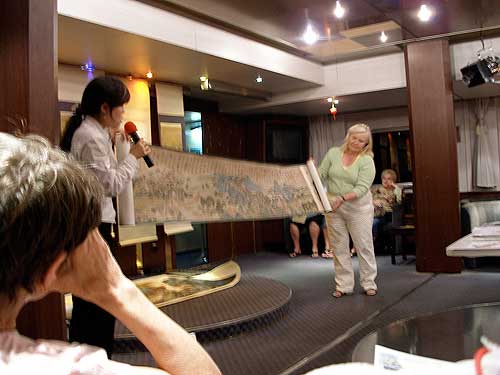
This one is on a long scroll. It is over 50 feet long and contains 10 million people on it.
Paintings in China first began as calligraphy.
|
5,000 years ago, the characters looked more like the item. For example, mountains and water:
|
|
|
Back then, there were no brushes or paper. Characters changed as new discoveries were made:
|
|
|
With the invention of the brush and silk, the characters transformed again:
|
|
|
Depending on the medium (silk, bamboo, rice paper) and hence the price, the characters mutated many more times, becoming wider or narrower, shorter or taller:
|
|
|
Eventually we arrive at the free-form characters of today, known as Chinese or Han characters:
|
|
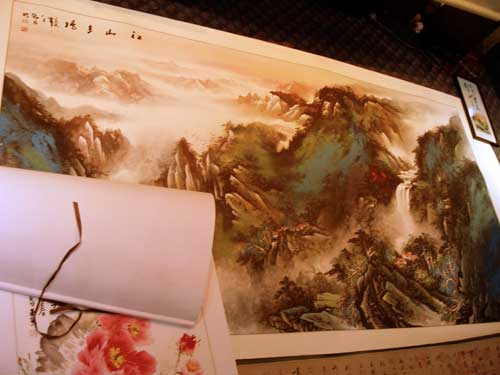
Nature scenes
Chinese watercolor came about between the Qin (221 - 206 BC) and Han (206 BC - 220) Dynasties. Colors were made from plants, and ink was made from black ash.
While rice paper usually refers to paper made from parts of the rice plant, the term is also loosely used for paper made from other plants. In the case of the Ming Dynasty, it was actually made of bamboo and tree bark.
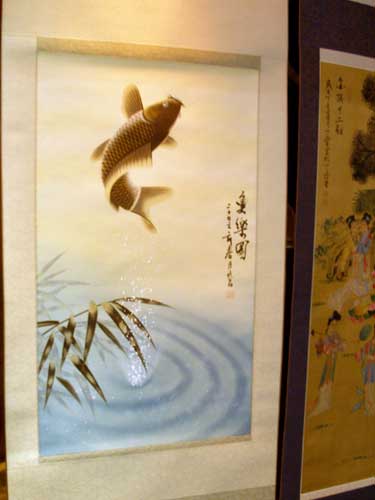
The fish is a symbol of good luck.

This is one of Jane's paintings of a boat as it travels through the Three Gorges.
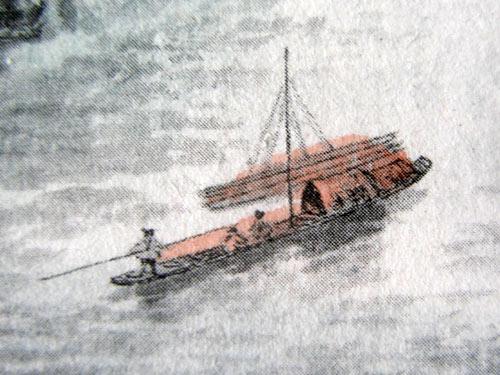
A close-up of the boat
Tobacco reached China toward the end of the 16th century. Snuff is pulverized tobacco inhaled through the nose. Mixed with medicinal herbs, it was believed to be a remedy for common illnesses such as colds, headaches and stomach disorders.
Snuff was carried in a small bottle like other medicines. Generally the bottles had a small spoon fixed in the stopper and were capped with a hemispherical piece of jade. They were made of a wide variety of materials including coral, ivory, jade, mother of pearl, quartz, gold, silver and more. Despite the number of exotic materials to chose from, glass remained the most popular substance, cut and polished like a precious stone.
As to the art of painting the interior of the bottles, legend has it that during the Qing Dynasty, an official stopped and sought rest at a small temple. He took out his crystal snuff bottle and found it was empty. He scraped off some of the residual powder using a slender, sharp bamboo stick, thus leaving lines on the inside of the bottle. When he left, his bottle was found by a young monk. The monk saw that the marks inside the bottle produced a pattern and thus the idea was born.
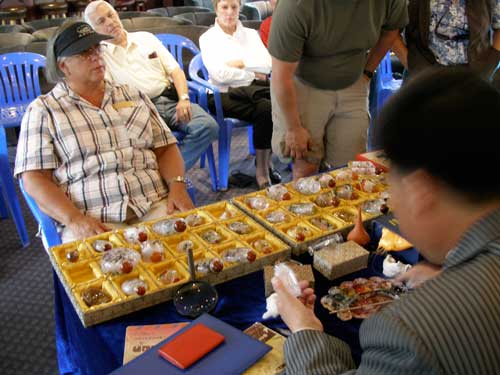
Mr. Chang shows his painting skill. Originally from Hubei Province, he has been painting bottles for over 20 years.
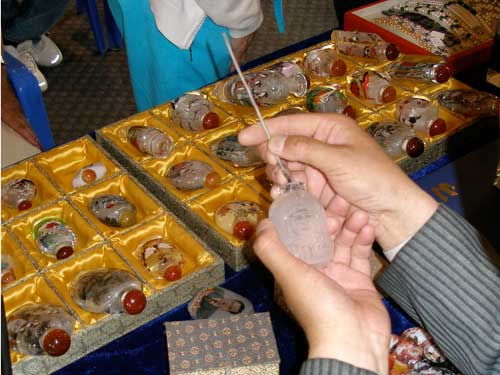
He uses a wolf-hair brush that he makes himself.
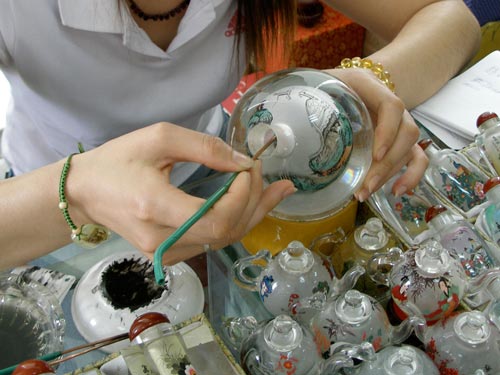
This artist was at the Three Gorges Dam gift shop.

All bottles come with their own little box. This marvelous one comes from a craft stand at the Yu Yuan bazaar in Shanghai.
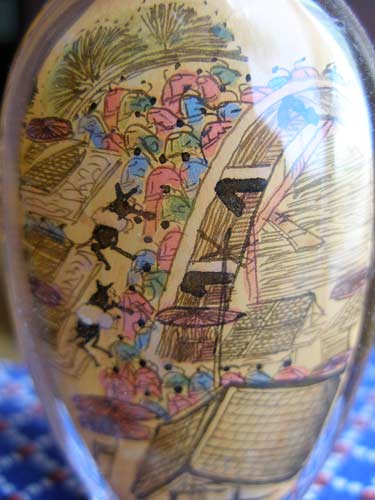
A closer view of the other side
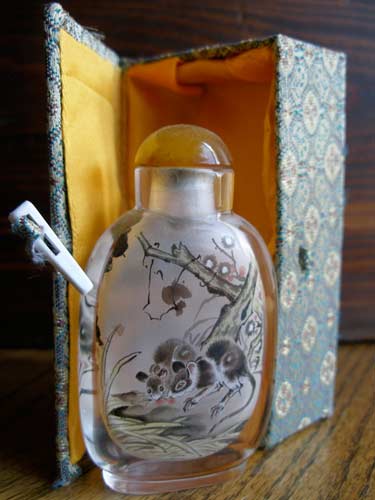
Another snuff bottle celebrating the year of the rat
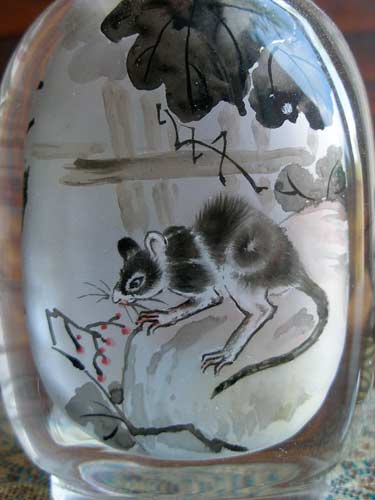
Each side of a snuff bottle is different.
Chinese embroidery has a history of 5,000 years. Because of the quality of the fiber, most fine embroideries are made in silk. A single silk thread can be divided into 64 strands. In the 14th century, Chinese silk embroidery production reached its high peak. Today most handwork has been replaced by machinery.
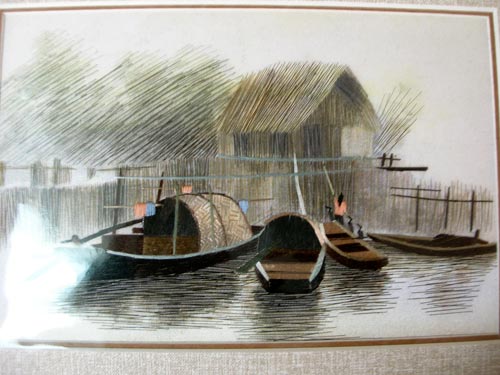
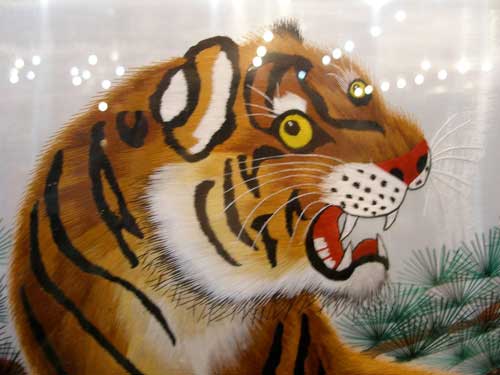
This embroidery was double- sided, with one side being a tiger and the other a leopard.

Embroidery and crystal displays

